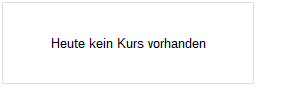
Zhaopin Report Found China's Working Women Less Keen on Childbearing
PR Newswire
BEIJING, May 11, 2017
BEIJING, May 11, 2017 /PRNewswire/ -- Zhaopin Limited (NYSE: ZPIN) ("Zhaopin" or the "Company"), a leading career platform[1] in China focused on connecting users with relevant job opportunities throughout their career lifecycle, today released its 2017 report on the current situation of working mothers in China. The report found that women in the workplace were less keen to have children because of work pressure and rising expenses.
Zhaopin conducted its 2017 survey of working mothers to understand their childbearing intentions, the impact of childbearing on career development, and benefits and provisions for raising babies. More than 40,200 people participated in this survey this year.
Highlights of Zhaopin's 2017 report on working mothers:
- For working women with no children, 40.1% were reluctant to have children, almost double the 20.48% figure for last year. For women who already have one child, 62.7% didn't want to have a second child.
- The top reasons for reluctance to have children were "not enough time and energy" (41.9%), "too expensive to raise children" (36.9%), and "concerns over career development" (35.2%).
- About 63.4% of women in the workplace believed that childbearing would have a large impact on their career development, compared with only 48.6% of men who believed so.
- Before childbearing, women in the workplace were more concerned about salary (76.5%), work environment (46.4%), and distance from work (45.9%) when selecting employers. After childbearing, working mothers gave priority to distance from work (81.0%), salary (68.7%), and work pressure (49.7%).
- After returning to work, the needs of working mothers included flexible working hours (70.5%), family first after work hours (62.1%), and higher salaries (41.1%).
- About 32.5% of women saw that their salaries decline after childbearing in 2017, compared with 24.2% for 2016. Meanwhile, 36.1% of women found that their positions were lowered after childbearing in 2017, up from 26.6% in 2016.
- About 66.0% of working mothers felt depressed after childbearing. 65.3% believed that returning to work would relieve the depression, while 13.8% said that going back to work actually deepened their depression.
- For women in the workplace, their biggest concerns about childbearing were difficulty in returning to work after childbearing (52.5%), and being replaced by others (48.9%).
- The majority of working mothers (67.9%) in China would not consider becoming stay-at-home moms. Key reasons included psychological imbalance by isolation from society (79.0%), pressure from life (65.4%), and negative impact on relationships (58.6%).
Low willingness for childbearing
In the Zhaopin survey this year, nearly 50% of female participants had no children, 43.3% had one child and 7% had two or more children.
| Childbearing status of women in the workplace | |
| No child | 49.7% |
| One child | 43.3% |
| Two or more children | 7.0% |
Among women with no children, 40.1% were reluctant to have children at the moment, almost double the 20.48% figure for last year.
| Childbearing intention of women without children | |
| Reluctant to have a child at the moment | 40.1% |
| Willing to have children | 59.9% |
The top reasons for reluctance to have children were "not enough time and energy" (41.9%), "too expensive to raise children" (36.9%), and "concerns over career development" (35.2%).
| Reasons for reluctance to have children | |
| Not enough time and energy | 41.9% |
| Too expensive to raise children | 36.9% |
| Concerns over career development | 35.2% |
| Worrying about pains in pregnancy and childbirth | 25.9% |
| Still renting apartment and cannot afford to buy one | 24.8% |
| No confidence in marriage | 21.5% |
| Cannot afford to buy a new apartment (bigger or with school quota) | 10.4% |
Among women who already have one child, 62.7% didn't want to have a second child, while 22.5% intended to have a second baby.
| Intention for second child among women with one child | |
| No intention for second child | 62.7% |
| Want to have second child | 22.5% |
| Have not thought about second child | 14.8% |
Impact of childbearing on career development
About 63.4% of women in the workplace believe that childbearing would have a large impact on their career development, compared with only 48.6% of men who believed so.
| Impact of childbearing on career development | ||
| | Women | Men |
| Big impact | 63.4% | 48.6% |
| Moderate impact | 30.8% | 41.9% |
| No impact | 5.8% | 9.4% |
For women in different age groups, those born in the 1980s saw the most impact on their career development from childbearing, followed by women born in the 1990s.
| Impact of childbearing on career development to women in different age groups | |||
| | Big impact | Moderate impact | No impact |
| Born after 1995 | 50.9% | 41.1% | 8.0% |
| Born in 1990s | 56.5% | 37.3% | 6.2% |
| Born in 1980s | 64.0% | 30.0% | 6.0% |
| Born in 1970s | 52.7% | 35.7% | 11.6% |
| Born in 1960s | 36.8% | 38.4% | 24.8% |
Zhaopin's survey found that 32.5% of women saw their salaries decline after childbearing in 2017, compared with 24.2% for 2016.
| Salary changes for women after childbearing | ||
| | 2017 | 2016 |
| Salary increased | 6.7% | 4.3% |
| Salary declined | 32.5% | 24.2% |
| No change | 60.8% | 71.5% |
About 36.1% of women found that their positions were lowered after childbearing in 2017, up from 26.6% in 2016.
| Position changes for women after childbearing | ||
| | 2017 Werbung Mehr Nachrichten zur Zhaopin ADR Aktie kostenlos abonnieren
E-Mail-Adresse
Bitte überprüfe deine die E-Mail-Adresse.
Benachrichtigungen von ARIVA.DE (Mit der Bestellung akzeptierst du die Datenschutzhinweise) -1  Vielen Dank, dass du dich für unseren Newsletter angemeldet hast. Du erhältst in Kürze eine E-Mail mit einem Aktivierungslink. Hinweis: ARIVA.DE veröffentlicht in dieser Rubrik Analysen, Kolumnen und Nachrichten aus verschiedenen Quellen. Die ARIVA.DE AG ist nicht verantwortlich für Inhalte, die erkennbar von Dritten in den „News“-Bereich dieser Webseite eingestellt worden sind, und macht sich diese nicht zu Eigen. Diese Inhalte sind insbesondere durch eine entsprechende „von“-Kennzeichnung unterhalb der Artikelüberschrift und/oder durch den Link „Um den vollständigen Artikel zu lesen, klicken Sie bitte hier.“ erkennbar; verantwortlich für diese Inhalte ist allein der genannte Dritte. Andere Nutzer interessierten sich auch für folgende News | |



